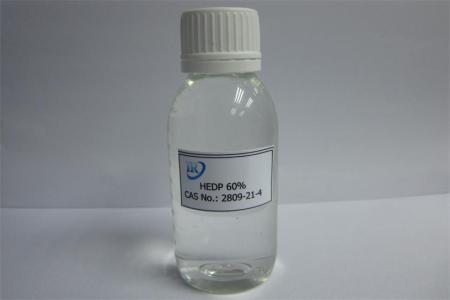What Are the Preparation Methods and Other USES of HEDP
HEDP is the main product of IROCHEM. It has the most sales of all organophosphoric antiscale and corrosion inhibitors in IRO. The HEDP market is in great demand. In order to meet the requirements of clients, IRO has optimized and improved the production of HEDP. Among the many methods of preparing HEDP in the industry, the following three methods are mainly used.

Preparation Methods of HEDP
The First Method
The glacial acetic acid reacts with phosphorus trichloride. Then to concentrate the acylation products and phosphorus trichloride hydrolysis products. Add the measured water and glacial acetic acid into the reactor and stir evenly. Add phosphorus trichloride during the cooling period. The reaction temperature should be controlled between 40 °C to 80 °C. Hydrogen chloride gas, the by-product of the reaction is condensed and fed into the absorber to recover hydrochloric acid.
Excessive acetyl chloride and acetic acid are condensed and returned to the reactor. After the phosphorus trichloride to join, the temperature rises to 100 ~ 130 °C. The time is 4 hours to 5 hours. After the reaction, water vapor hydrolysis was introduced. The residual acetic acid and low boiling point substance are distilled. And then get the product.
The Second Method
Through the nucleophilic addition of diethylenetriamine and formaldehyde. The product was esterified and neutralized with the hydrolyzed product of trichloride. And then get the product.
The third Method
Phosphorus trichloride is mixed with glacial acetic acid. To heat and distill them, and get acetyl chloride. And then to react that with the phosphoric acid. The products sold in the market is a viscous liquid diluted to 50% of water. Each ton of products consumes 931 kilograms of phosphorus trichloride (95%) and 591 kilograms of glacial acetic acid.
The HEDP production process adopted by IROCHEM combines many advantages of the above methods. And IRO has made further innovations and improvements. For this reason, the HEDP products produced by IRO are recognized by the market and clients.
Other USES of HEDP
Compared with organic phosphonic antiscale and corrosion inhibitors, HEDP has better chemical stability. It doesn’t hydrolyze easily, and it’s resistant to heat. HEDP has a good chelating ability for a variety of metal ions.
Such as calcium, magnesium, copper, zinc ions. At present, the commonly used organic phosphorus chelators are HEDP, DTPMP, BHMTPMPA, PAPEMP, etc.
HEDP is not only a good chelating agent but also a good stabilizer.
A stabilizer is a chemical that enhances the stability of the solution, colloids, solids, and mixtures. It can slow down the reaction. It keeps the chemical balance. It reduces surface tension. It protects against the light. It can be decomposed or decomposed.
Chemical stabilizers are widely available in the broad sense. Any chemicals can be used flexibly to achieve a stable purpose. The product quality is mainly based on the design purpose of the formula designer. HEDP is an excellent peroxide stabilizer.
Title:
What Are The Preparation Methods and Other USES of HEDP?
Source: https://www.irohedp.com/what-are-the-preparation-methods-and-other-uses-of-hedp/